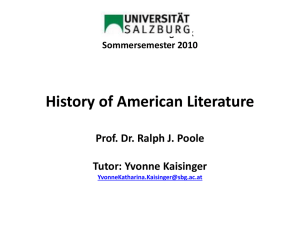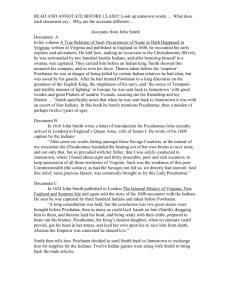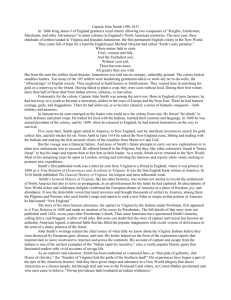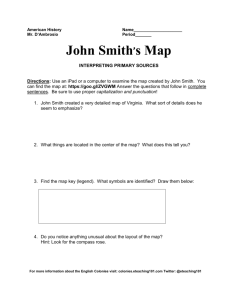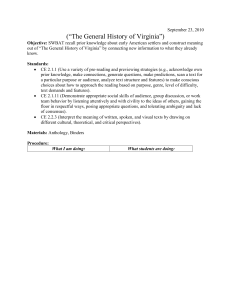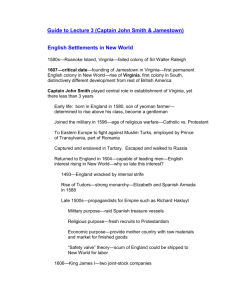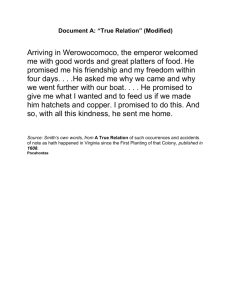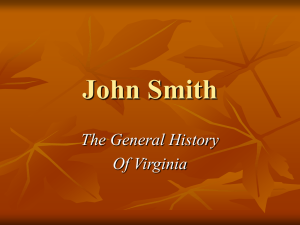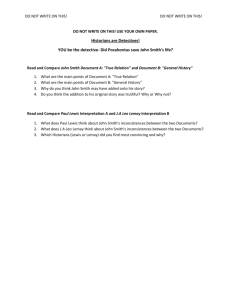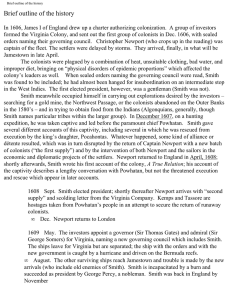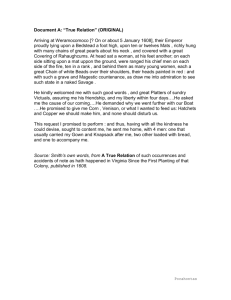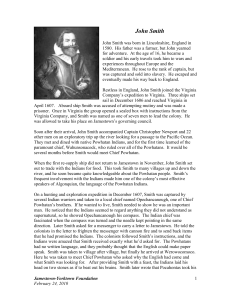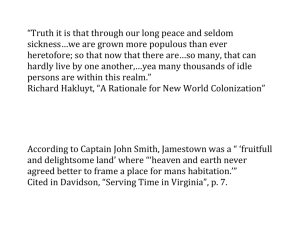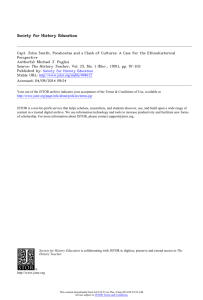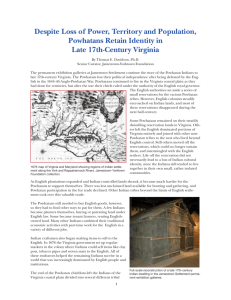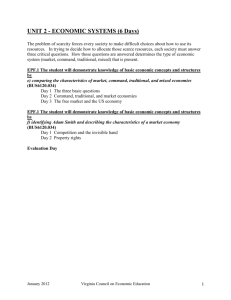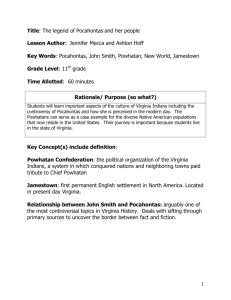John Smith: 1580-1631
advertisement
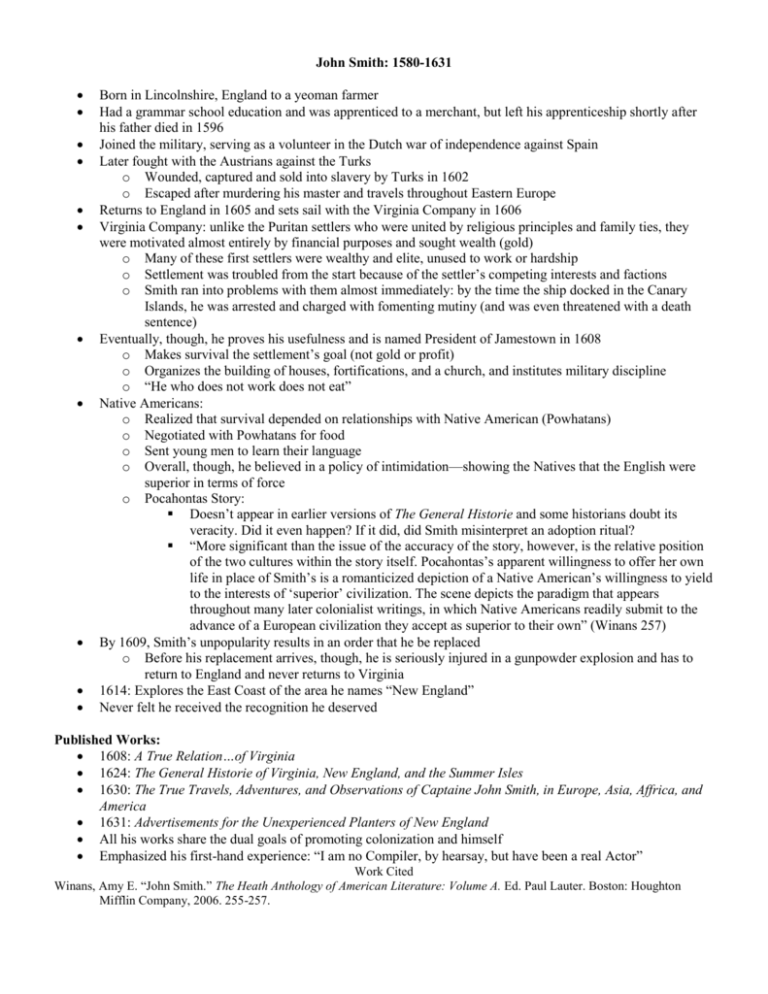
John Smith: 1580-1631 Born in Lincolnshire, England to a yeoman farmer Had a grammar school education and was apprenticed to a merchant, but left his apprenticeship shortly after his father died in 1596 Joined the military, serving as a volunteer in the Dutch war of independence against Spain Later fought with the Austrians against the Turks o Wounded, captured and sold into slavery by Turks in 1602 o Escaped after murdering his master and travels throughout Eastern Europe Returns to England in 1605 and sets sail with the Virginia Company in 1606 Virginia Company: unlike the Puritan settlers who were united by religious principles and family ties, they were motivated almost entirely by financial purposes and sought wealth (gold) o Many of these first settlers were wealthy and elite, unused to work or hardship o Settlement was troubled from the start because of the settler’s competing interests and factions o Smith ran into problems with them almost immediately: by the time the ship docked in the Canary Islands, he was arrested and charged with fomenting mutiny (and was even threatened with a death sentence) Eventually, though, he proves his usefulness and is named President of Jamestown in 1608 o Makes survival the settlement’s goal (not gold or profit) o Organizes the building of houses, fortifications, and a church, and institutes military discipline o “He who does not work does not eat” Native Americans: o Realized that survival depended on relationships with Native American (Powhatans) o Negotiated with Powhatans for food o Sent young men to learn their language o Overall, though, he believed in a policy of intimidation—showing the Natives that the English were superior in terms of force o Pocahontas Story: Doesn’t appear in earlier versions of The General Historie and some historians doubt its veracity. Did it even happen? If it did, did Smith misinterpret an adoption ritual? “More significant than the issue of the accuracy of the story, however, is the relative position of the two cultures within the story itself. Pocahontas’s apparent willingness to offer her own life in place of Smith’s is a romanticized depiction of a Native American’s willingness to yield to the interests of ‘superior’ civilization. The scene depicts the paradigm that appears throughout many later colonialist writings, in which Native Americans readily submit to the advance of a European civilization they accept as superior to their own” (Winans 257) By 1609, Smith’s unpopularity results in an order that he be replaced o Before his replacement arrives, though, he is seriously injured in a gunpowder explosion and has to return to England and never returns to Virginia 1614: Explores the East Coast of the area he names “New England” Never felt he received the recognition he deserved Published Works: 1608: A True Relation…of Virginia 1624: The General Historie of Virginia, New England, and the Summer Isles 1630: The True Travels, Adventures, and Observations of Captaine John Smith, in Europe, Asia, Affrica, and America 1631: Advertisements for the Unexperienced Planters of New England All his works share the dual goals of promoting colonization and himself Emphasized his first-hand experience: “I am no Compiler, by hearsay, but have been a real Actor” Work Cited Winans, Amy E. “John Smith.” The Heath Anthology of American Literature: Volume A. Ed. Paul Lauter. Boston: Houghton Mifflin Company, 2006. 255-257.

